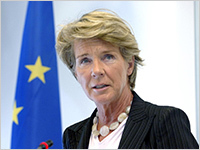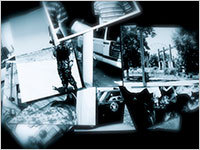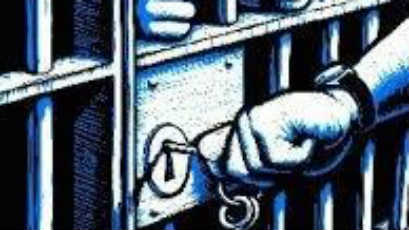Asset Publisher

A new ambition for the European continent
The Warsaw Summit – May 2005
Denis HUBER and Hanna MACHIŃSKA

On 1 February 2017, I and some co-workers received a farewell letter from Hanna Machińska, our colleague and friend, who had been – in various respects – the voice and face of the Council of Europe in Poland for more than 25 years. The exchanges which followed this sad news brought back many memories. Together, we had seen the Council of Europe reach out to the countries which had been separated from it by the notorious “Iron Curtain”, the reconciliation between western and eastern Europe, and the road travelled since then, including much hope and progress, but also some yearning and inevitable disappointment, and even fears of backpedalling. This journey culminated in the 3rd Summit of the Council of Europe, where Hanna and I had a ringside seat, in our roles as Director of the Council of Europe Information Office in Warsaw and as Secretary to the successive working groups of the Ministers’ Deputies in Strasbourg respectively. This inspired us to jointly tell the story of this event.
A 15-year perspective
Reflecting 15 years on from the 3rd Summit of Heads of States and Governments of the Council of Europe, which was held on 16 and 17 May 2005, we have the benefit of perspective in assessing what it really achieved. Poland was then just one of the new European Union members, growing in confidence, and seeking a European future in which barriers and divisions were eroded, including with regard to human rights.
The 3rd Summit took place in Poland’s initial period of European Union membership and at the end of its presidency of the Committee of Ministers of the Council of Europe. The presidency’s priorities were largely derived from the challenges facing the Council of Europe member states as a whole. Council of Europe and European Union membership enjoyed high levels of public support in Poland at that time. Participation in these institutions was seen as a means to overcome divisions in Europe with Poland becoming a fully fledged participant in the system of democratic states. For states across central and eastern Europe, European Union and Council of Europe membership went hand in hand: both aimed at strengthening democracy, human rights and the rule of law in their own states and across the continent.
Time and distance also allow us to see, however, the limits of that summit. Today, those very same objectives are being challenged, both at domestic level in member states, and at the level of European institutions too.
At a time when the European Union had just experienced the biggest enlargement in its history and was hoping to follow on from this with a major historical step by adopting its own constitution, one of the main challenges for the Warsaw Summit was to trace the outlines and lay the ground for an ambitious partnership between the two organisations which had emerged from the same political project, 60 years nearly to the day after the end of the Second World War in Europe.
The tortoise and the hare
The story of the 3rd Summit started very early, barely 15 months after the 2nd Summit. The Parliamentary Assembly played the role of the hare, leaving it until only January 1999 to adopt Recommendation 1394, in which it drew the lessons from a decade of major political upheavals, devising an ambitious project entitled “Europe: a continental design”, and asking the Committee of Ministers “to foster the idea of a third summit of heads of state which would focus on a continental approach to European integration”.
The Committee of Ministers’ feeling was that this recommendation had come much too soon. All its efforts were focused on implementing the Action Plan adopted at the 2nd Summit and preparing the Council of Europe’s 50th anniversary, which was celebrated in style in Budapest in May 1999. Affairs had proceeded quickly, and for anyone who knew how difficult and complex diplomatic negotiations could be, it would have been clear that any comparison with a tortoise was grossly unfair!
The first sign of any interest in a 3rd Summit came one year later from Pietro Ago, the Italian Ambassador, during our discussions on the preparation of the Italian chairmanship of the Committee of Ministers (May-November 2000). A very small group of us discussed the possible goals and content of such a summit, and Ambassador Ago set about trying to convince his authorities to add this project to the programme of the chairmanship. This worked, as the priorities presented a few months later to the Committee of Ministers by Lamberto Dini, the Italian Foreign Minister, included an ambitious institutional reform programme, proposing among other things that a 3rd Summit should be held and that meetings of Council of Europe member states at the highest political level should become a regular event (taking place every four years, which meant that the 3rd Summit would be held in autumn 2001).
If you wish to continue your reading, you may buy the book "Europe: a human enterprise".
Hanna MACHIŃSKA
After studying and teaching law at the University of Warsaw, Hanna opened the Council of Europe Information Office in Warsaw in 1991 and ran it until January 2017, while also representing the Council of Europe at the Organization for Security and Co-operation in Europe’s Office for Democratic Institutions and Human Rights. In this capacity she was closely involved in the preparations for the 3rd Council of Europe Summit and the organisation of events around it, as well as in the implementation of the priorities of the Polish Presidency of the Committee of Ministers from November 2004 to May 2005. Since September 2017 she has been working as Deputy to the Polish Ombudsman /Human Rights Defender.
Denis HUBER
After embarking on a diplomatic career in 1990, in the French Ministry for Foreign Affairs, Denis joined the Council of Europe in 1993. He gained 10 years’ experience in the Secretariat of the Committee of Ministers, being directly involved in the preparation and follow-up of two Summits of Heads of State and Government of the Council of Europe – the Strasbourg Summit (in October 1997) and the Warsaw Summit (in May 2005). Between 2006 and 2012, he was posted to Belgrade, as Special Representative of the Secretary General in Serbia, and then to Lisbon, as Executive Director of the North-South Centre. Since returning to Strasbourg, he has worked successively at the Congress of Local and Regional Authorities, the Directorate General of Administration and the Co-operation Group to Combat Drug Abuse and Illicit Trafficking in Drugs (Pompidou Group). He is the author of the book A decade which made history: the Council of Europe 1989-1999.




